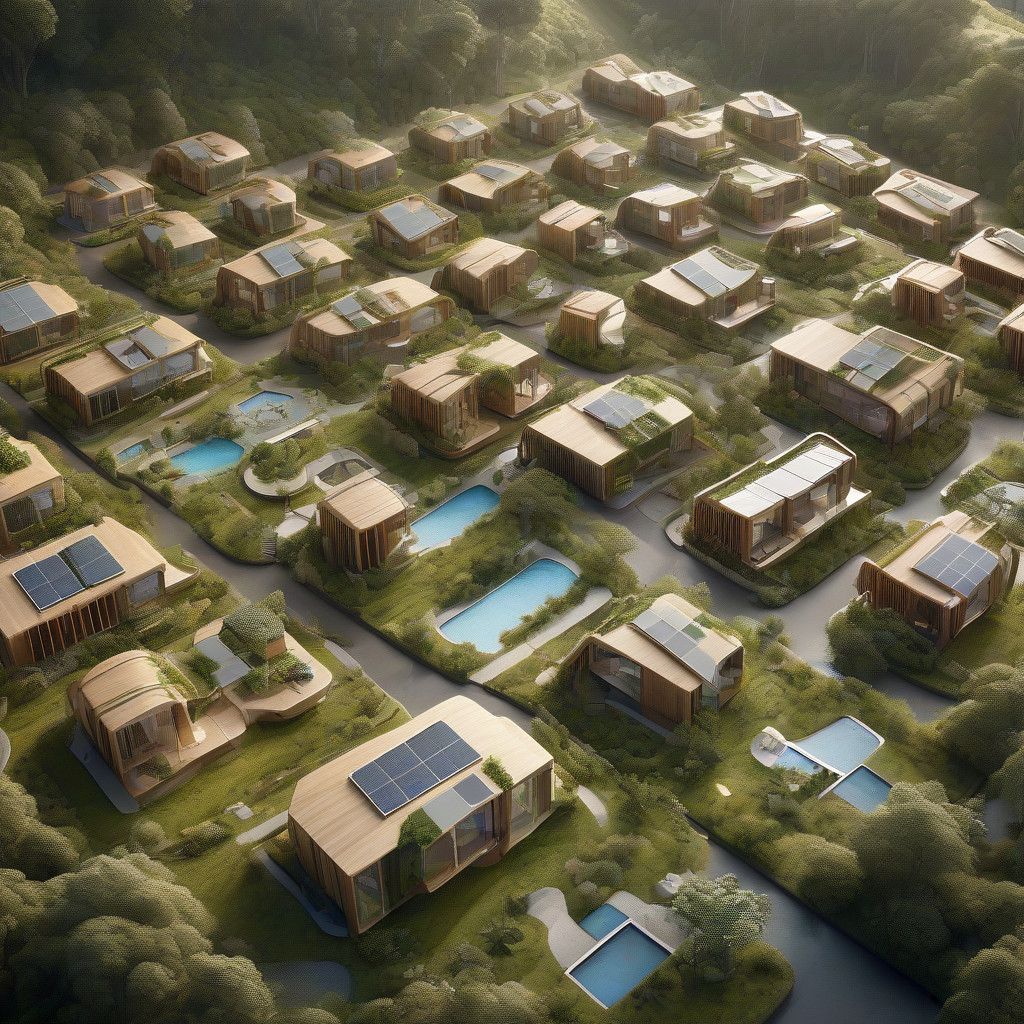Buildings and infrastructure contribute 40% of global carbon emissions, a figure that must command our immediate attention. With three-quarters of these emissions stemming from energy consumption during operation, and the remaining 25% linked to embodied carbon associated with manufacturing, mining, and construction processes, there exists a pressing need for innovative solutions. Transitioning towards green building materials and circularity within supply chains is crucial to mitigate climate change and conserve precious resources. One promising avenue lies in biomaterials, particularly hemp, which stands out as a resilient, sustainable, and climate-positive alternative to traditional building materials.
Hemp, with its rapid growth cycle—reaching heights of 12 feet in just four months—can sequester between 9 to 15 tonnes of CO2 per hectare annually. This remarkable characteristic makes it an attractive option for sustainable construction. Meanwhile, HEMSPAN® has positioned itself at the forefront of this transformation, showcasing how sustainable building practices can be effectively implemented to address the challenges posed by conventional construction methods.
The advantages of adopting natural materials in construction extend beyond simple carbon reduction. By utilizing such materials, builders can significantly limit harmful volatile organic compounds (VOCs) in living environments, promoting healthier air quality and overall well-being for occupants. Moreover, structures made from natural materials are often better equipped to withstand extreme weather conditions, ensuring consistent energy efficiency and comfort without excessive reliance on temperature control systems.
Incorporating considerations of density and biodiversity into building design remains crucial. HEMSPAN® advocates for housing that integrates open spaces and supports local biodiversity, an aspect often overlooked in traditional methods, which reduce the environmental footprint of agricultural practices. By sourcing biomass locally and from sustainable farms within a one-hour radius of their production facilities, HEMSPAN® strengthens the local economy while enhancing ecological health through methods like weed suppression and improved soil quality.
The company’s founder, Matthew Belcher, has been instrumental in the clean technology sector for over six years. His experiences with various natural composites have led him to recognize the untapped potential of hemp in construction, ultimately leading to the establishment of HEMSPAN®. This initiative aims to tackle reliability and viability challenges across the housing industry at every operational stage.
Through innovative building systems, HEMSPAN® strives to create climate-positive communities and has already embarked on various projects that demonstrate the feasibility of their approach. Their vision includes making buildings self-sufficient in energy consumption through bio-based feedstocks and advanced technology implementations. The key focus of their BIOHAUS® system involves optimizing building fabrics to maximize energy efficiency while implementing renewable energy sources, like solar and wind, to support a home’s energy needs.
As part of their commitment to sustainability, HEMSPAN® is determined to eliminate waste throughout the construction process. Their model ensures that all leftover materials from production are recycled back into the creation of new components, resulting in zero waste upon completion of each building.
The BIOHAUS® system is a thorough, sustainable, and comprehensive whole-house solution. It incorporates advanced design principles along with building technologies to achieve a climate-neutral impact. Notably, the hemp incorporated within the BIOHAUS® model has been shown to sequester at least 50 tonnes of carbon per unit, enhancing the broader goal of carbon storage in constructed environments.
Despite noteworthy progress, the path forward is not without challenges. HEMSPAN® has faced a prevailing skepticism towards natural materials, often rooted in a belief that they lack the performance abilities of traditional materials. To combat this narrative, HEMSPAN® aims to offer tangible evidence of their natural systems’ efficacy, emphasizing that standards can be met or exceeded compared to conventional materials.
A significant hurdle looming over the advancement of hemp in construction is its historical association with the cannabis family. By educating stakeholders and the public about the differences between industrial hemp and popular cannabis varieties, HEMSPAN® hopes to dismantle misguided biases that hinder the cultivation and use of this versatile plant.
Achieving large-scale implementation of bio-based materials is critical to overcoming barriers to cost and accessibility for natural construction solutions. The need for a shift in perspective toward greener alternatives seems more pressing than ever, especially with governmental priorities increasingly favoring environmentally focused initiatives in housing development.
HEMSPAN®’s ambitious project to create 2,000 sustainable homes has the potential to transform approaches to housing design and construction. Engaging with local authorities, stakeholders, and the community to establish a robust model for sustainable development is paramount. The goal is not merely to build homes but to facilitate climate-positive environments that contribute positively to both their occupants and surroundings.
In conclusion, as we move toward a future where housing meets ambitious sustainability targets, HEMSPAN® exemplifies how bio-based building practices can disrupt traditional construction paradigms. By fostering collaboration and leveraging innovative materials like hemp, the firm illustrates that it is possible to create homes that not only function but thrive in harmony with nature.












